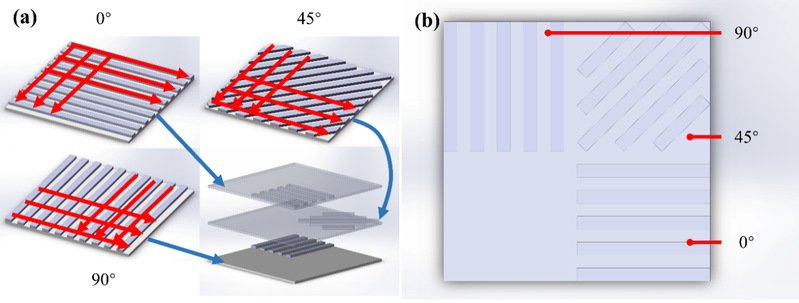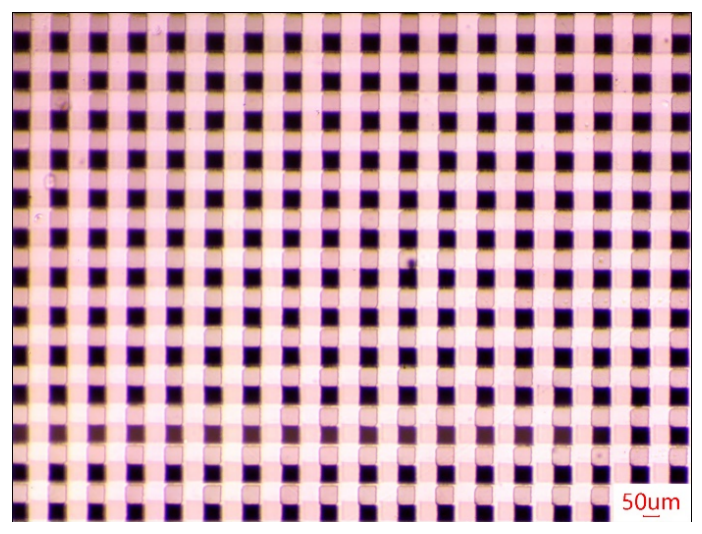SUN Xuhui, a postgraduate student of CALM (first author), Dr. WANG Zhiwen and Professor ZHENG Hongyu (corresponding authors), published a paper entitled “An approach for fabrication of multi-directional polarizer array by picosecond laser micro-processing” in OPTICS & LASER TECHNOLOGY.
A method for preparing a multi-directional polarization filter by using one-dimensional nano-grating polarizers is proposed. A picosecond laser is employed to precisely ablate aluminum film on TAC (Triacetate Cellulose) substrate to form grating pixels. The effects of the key laser processing parameters (power density I, line spacing b, number of repetitions σ) on the ablation morphology and optical transmittance are studied. A three-layer polarization filter is aligned and stacked together with the directions of 0°, 45°, and 90°, respectively to obtain the Stokes parameters. The Rigorous Coupled Wave Analysis (RCWA) theory is deployed to calculate the polarization properties of one-dimensional metal gratings. The polarization performance of the three-dimensional subwavelength metal aluminum polarizer is experimentally evaluated. Results show that the transmittance of the laser-ablated area increases to more than 96 % from the original 84 % at the wavelength of 550 nm. The polarization filter prepared in our study is applied to the polarization angle measurement. The original error of the polarization angle is measured to be less than ± 0.3°, which indicates a high degree of measurement accuracy. The proposed method is flexible, cost-effective, maskless, no-need-of stringent cleanroom environment, and of high speed. It has the potential for applications in the field of polarization navigation, image processing, and polarization imaging.
In this paper, the preparation process and effect of three-dimensional polarization filter using commercial subwavelength aluminum grating polarizer are shown in the following figure.

Fig. 1. Fabrication process of the polarization filter:(a) Laser scanning strategy: scanning route of 0°, 45°, and 90°; (b) The plan view of the polarization filter.

Fig. 2. The brightness of each polarization filter with the rotation angle.

Fig. 3. Polarization angle and polarization angle error with rotation angle.

Fig. 4. Polarization filter with a pixel size of 50 μm.


